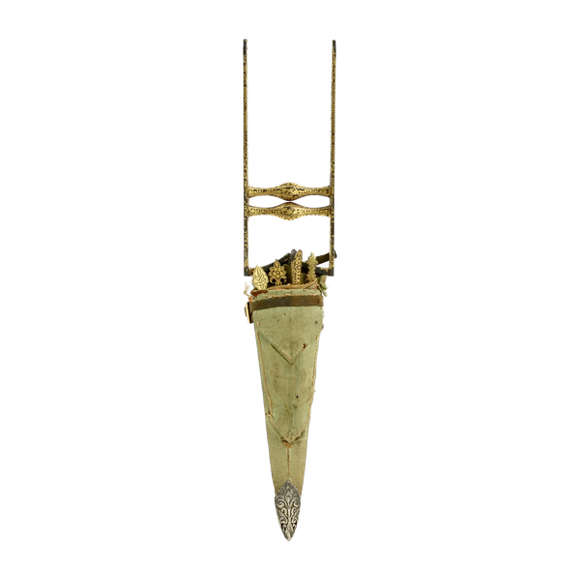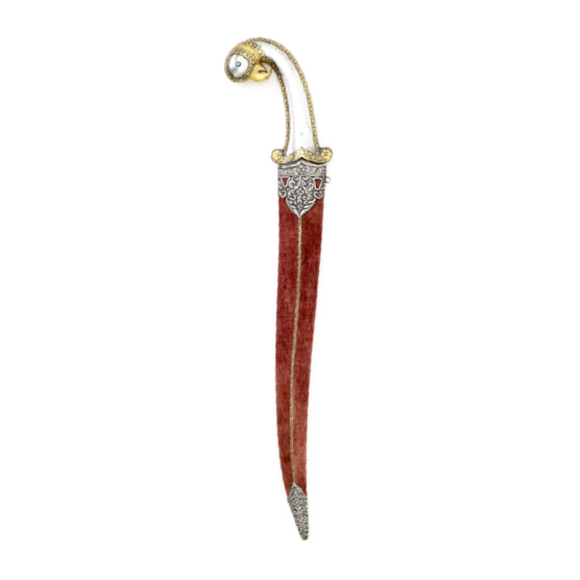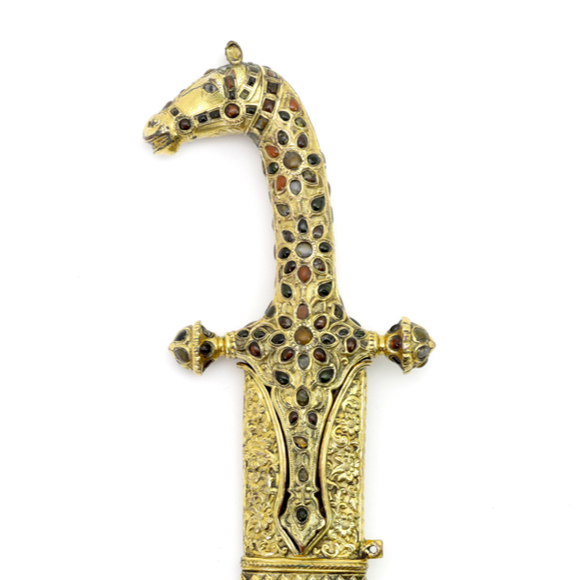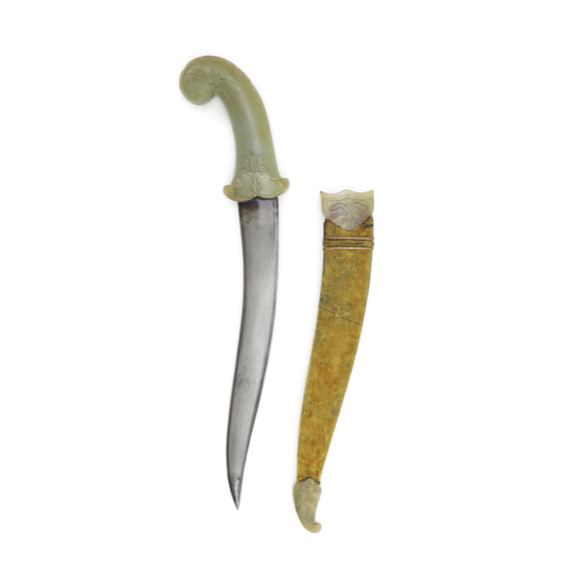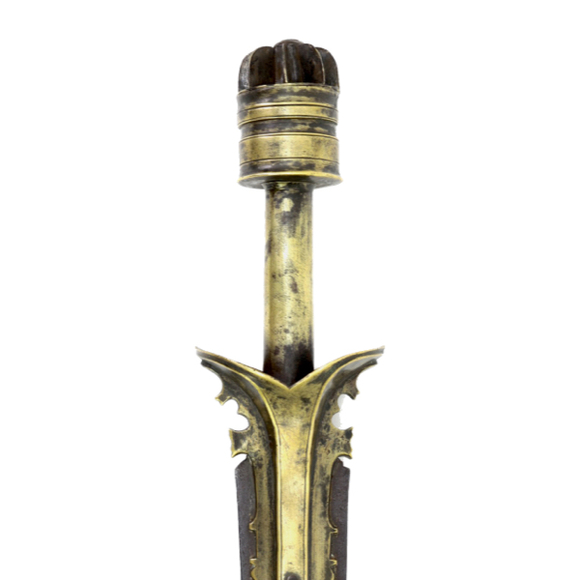With a fine wootz blade with a pronounced center ridge.

Sheathed 31.8 cm
Knife 27.6 cm
17.4 cm
Base 5.5 mm
Middle 3.5 mm
Base 23 mm
Middle 19 mm
149 grams
18 mm into hilt
Wootz steel, copper alloy, gold, brass, wood, fabric, gold, cotton, garnet beads
India
18th or 19th century
From a German collection
Description
A north Indian kard (کرد), also known as churā (छुरा) in Hindi.1
It has a fine wootz blade of typical form, with gold koftgari decoration at its base.
The all-metal hilt is made of a copper alloy, finely chiseled with floral decoration over a stippled background. It was then fire-gilt, the copper now visible through some of the wear.
The wooden scabbard is covered with black fabric, probably once velvet with the pile now lost, and the fabric is in fragile condition. There are two brass scabbard mounts with fine openwork, a small part missing on one side of the mouthpiece.
A string of red garnets is attached to a ring on the upper scabbard mounts. The main string contains 68 of them and the loop 29 for a total of 97.
Attribution
Gilt copper alloy mounts are normally a trademark of work from Kutch in Gujarat, but in this case, the style of the flowers is not typically Kutch.
Looking at the entire piece, I have the feeling it is either north Indian or possibly Deccan.
Notes
1. They are consistently called churā in Thomas Holbein Hendley; Ulwar and its Art Treasures. W. Griggs, London, 1888.
















The style typical of Kutch, the execution far above what is normally seen on work from that area.
Nice and complete with opaque green hilt and scabbard mounts.
An early fighting piece with strong reinforcing langet and broad, cobra shaped tip.

